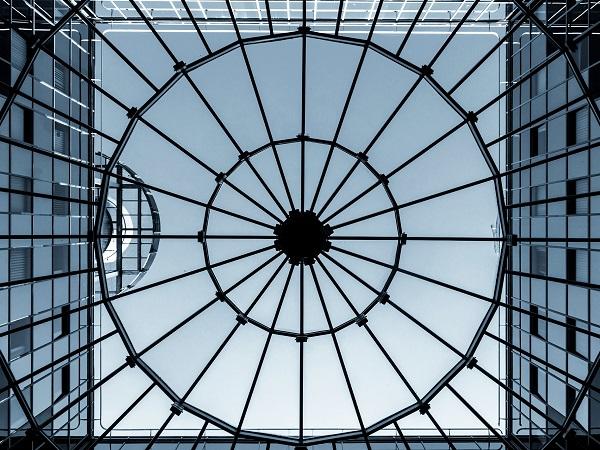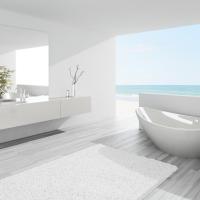
Date: 21 April 2022
To achieve the EU’s goal to reduce overall carbon emissions, one route pursued by EU authorities is to move towards zero-emission buildings[i]. It means that the CO2 emitted for heating and cooling the building throughout its lifetime, i.e., the operational carbon, needs to be minimised. Equally, CO2 emitted for the building’s construction, including the manufacturing of building materials, i.e., the embodied carbon, also needs to be minimised.
Both double glazed and triple glazed windows, when equipped with coated glass[ii], are high-performance products that help in reducing the energy consumption and the CO2 emissions of a building. Yet, manufacturing triple glazed windows generates more CO2 than manufacturing double glazed windows due to the CO2 embodied into the manufacturing of an extra sheet of glass and a heavier frame. Besides, since triple glazed windows are generally heavier than double glazed ones, the transport of tripled glazed windows generates more CO2[iii]. It is thus necessary to evaluate if using high-performance triple glazed windows generates a reduction of buildings’ CO2 emissions that is higher than when using a high-performance double glazed window[iv]. (And, if yes, in which conditions).
Glass for Europe has run calculations based on public data and energy performance models used by and developed for the European Commission (see Annex on methodology and calculations). This paper presents the results of these calculations. It must be noted that the calculations are strictly limited to carbon savings and carbon payback times according to the referenced energy performance models and parameters. For instance, the model is limited to residential buildings only. With these calculations, Glass for Europe does not intend to recommend any specific glass or window type for any building.
The following can be concluded from these calculations:
- Across Europe, using Low-Emissivity (Low-E) triple glazed windows in buildings offers more CO2 savings during the operational phase of a building than the incremental CO2 that was emitted for its production, when compared to Low-E double glazed windows.
- The CO2 payback time between Low-E double glazed windows versus Low-E triple glazed windows is highly dependent on the climate, the CO2 efficiency of the heating or cooling system and the energy conversion factor. This payback time varies between 35 to 76 months across Europe.
- The carbon payback time of Low-E triple glazed windows is the shortest, i.e., 35 months, in northern European climates, where these windows offer the most energy savings and comfort for building occupants.
- In southern European climates, the windows offering the most CO2 savings during the operational phase of a building are double glazed windows equipped with solar control glass, rather than those equipped with Low-E glass. According to these models, solar control double glazed windows offer the shortest CO2 payback time in the southern European climates.
- While buildings become increasingly better insulated and the energy mix used to heat and cool buildings is gradually decarbonised, the payback times may become longer. Yet considering the lifetime[v] of a glazing product and the reduction in CO2 emissions from glass manufacturing, triple glazed windows are likely to continue generating more CO2 savings throughout their lifetime in the coming decades.
These findings show that high-performance triple glazed windows offer benefits in terms of reduced operational CO2 emissions that largely outweigh the incremental embodied CO2 emissions compared to high-performance double glazed windows.
When appropriate in a building considering the region’s climate, expected energy savings, thermal comfort considerations, etc., high-performance triple glazed windows will contribute to reduced CO2 emissions throughout the life cycles of both windows and buildings.
While the above is taken from the calculations realised by Glass for Europe based on the methodology and parameters presented on the next pages, it must be noted that the findings are generally consistent with numerous other pieces of work on the topic[vi].
***
Click here to download the full report.
[i] As defined in the EC proposal for a revised Energy Performance of Buildings Directive. https://eur-lex.europa.eu/legal-content/EN/TXT/?uri=CELEX%3A52021PC0802&qid=1641802763889
[ii] Main types of coated glass considered in this paper are Low-Emissivity coated glass (Low-E) and solar-control coated glass, meant to increase energy performance by reducing heat losses and either maximising or minimising solar heat gains.
[iii] This assumption is based on available EPDs for windows (see endnote x for the weblink to these EPDs). This statement is valid if the glass sheets composing the respective windows have a comparable thickness and if the frames are made of similar materials.
[iv] See the annex for the detailed product specifications. Only windows equipped with coated glass are computed, be it in double glazed or triple glazed. In the North and central climates, Low-E coated glass are used while solar control glass is also computed for the south climates.
[v] The lifetime is equivalent to how long it stays in a building. For the sake of this work, a period of at least 30 years is computed, knowing that it is not uncommon for windows to remain installed in a building for 50 years or more in the residential sector.
[vi] Culp, T. (2022, January 18). Triple Glazing and Embodied Energy: Yes, the juice is worth the squeeze. National Glass Association. https://www.glass.org/triple glazed-and-embodied-energy-yes-juice-worth-squeeze
Ménard, R., & Souviron, J. (2020). Passive solar heating through glazing: The limits and potential for climate change mitigation in the European building stock. Energy and Buildings, 228, 110400. https://doi.org/10.1016/j.enbuild.2020.110400
Feehan, A., Nagpal, H., Marvuglia, A., & Gallagher, J. (2021). Adopting an integrated building energy simulation and life cycle assessment framework for the optimisation of facades and fenestration in building envelopes. Journal of Building Engineering, 43, 103138. https://doi.org/10.1016/j.jobe.2021.103138
 600450
600450


















Add new comment